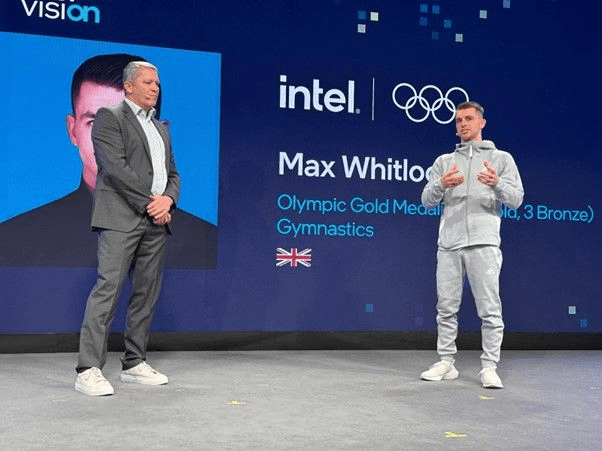
Intel’s AI-Powered Talent Identification System Unveiled at Paris 2024 Olympics to Discover Future Gold Medalists
Fiona Nanna, ForeMedia News
7 minutes read. Updated 5:02PM GMT Thurs, 8August, 2024
The quest to unearth future Olympic champions is taking a high-tech turn at the Paris 2024 Olympics, with a groundbreaking AI-powered talent identification system capturing the imaginations of spectators and athletes alike. This innovative technology promises to democratize sports talent detection, making advanced sports science accessible even in remote and underserved regions globally.
As the AI-driven system comes to life, young participants like Tacto and Tomo, siblings from Yokohama, Japan, are among the first to experience its capabilities. Tacto, aged seven, and Tomo, aged four, engage in a series of tests designed to measure their athletic potential. Their performance is tracked through a combination of infra-red sensors and high-resolution cameras set up near the Olympic Stadium.
The AI system evaluates various physical attributes through five distinct tests, including running speed, jumping ability, and grip strength. The gathered data helps in assessing critical factors such as power, explosiveness, endurance, reaction time, strength, and agility. This data is then compared against benchmarks from professional and Olympic athletes to determine each participant’s potential.
Sarah Vickers, Head of Intel’s Olympic and Paralympic Program, explains the system’s purpose: “We’re utilizing computer vision and historical data to provide the average person with a comparison to elite athletes, helping them identify the sport they are best suited for.” Following their assessments, participants receive recommendations for sports that align with their physical strengths, drawn from a selection of ten different sports.
The AI technology, currently featured at the Paris Olympics, also has a more compact and portable version that can be used with basic devices like mobile phones, tablets, or PCs. This portable version enables the technology to reach areas previously inaccessible due to the bulkiness of traditional assessment tools. For instance, the International Olympic Committee recently deployed this portable AI system to Senegal, where it evaluated over 1,000 children across five villages, identifying 48 with significant potential and one with exceptional promise. These children have been offered places on sports programs to further develop their skills.
Prof. John Brewer, a visiting lecturer at the University of Suffolk with experience in talent identification for England’s Football Association, acknowledges the potential of this technology. He describes early talent identification as the “holy grail” of sports but also highlights its limitations. According to Brewer, while the system is beneficial for initial assessments, it may fall short for technical sports or those requiring endurance, as it cannot measure attributes like aerobic capacity. Nevertheless, he sees the portable system as a valuable tool for initial talent discovery, especially in regions lacking access to advanced facilities.
At the Olympic Stadium, young Tacto’s results suggest he has potential as a sprinter, much to his delight, even though he currently favors football and tennis. Meanwhile, experienced athletes Hank and Brock, former university competitors from the US, test the system with mixed results. Hank’s results suggest rugby, while Brock, who has never played basketball, is identified as having potential in that sport—a humorous reminder that AI is not infallible.
Despite occasional inaccuracies, the AI technology’s ability to identify athletic potential and provide opportunities for future Olympians marks a significant step forward in sports science. As it continues to evolve and expand its reach, it holds the promise of transforming how talent is discovered and nurtured worldwide.

